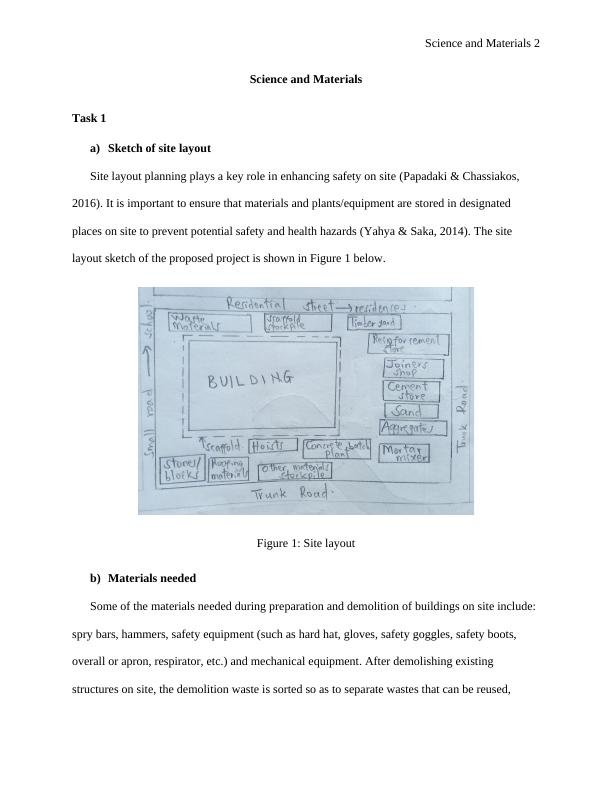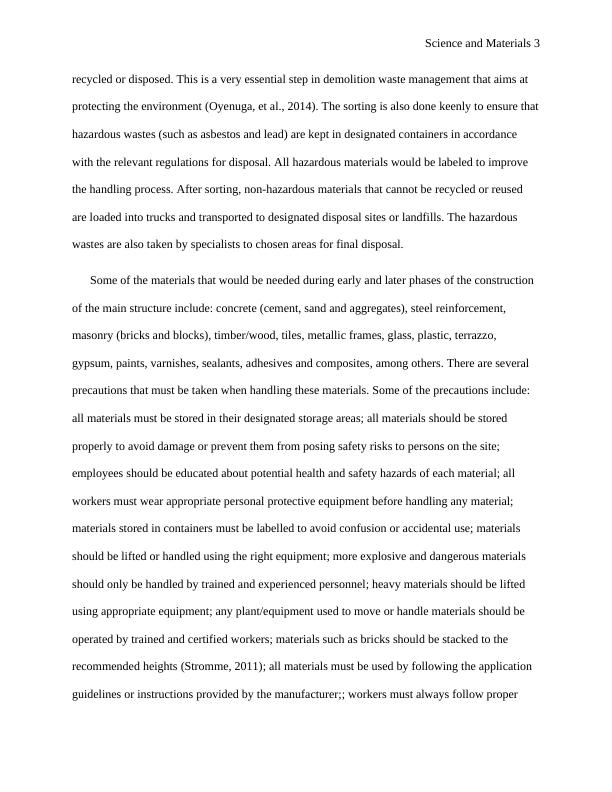Science and Materials: Site Layout, Materials, Hazards, and Precautions
Prepare reports on how to improve sustainability and awareness of the environmental impact of construction activities within the construction process.
16 Pages4347 Words355 Views
Added on 2023-04-22
About This Document
This document discusses the site layout planning, materials needed, hazards, and precautions in construction. It also compares the advantages and disadvantages of steel and concrete columns and suggests alternative materials like wood. Applicable standards and testing procedures for structural wood are also discussed.
Science and Materials: Site Layout, Materials, Hazards, and Precautions
Prepare reports on how to improve sustainability and awareness of the environmental impact of construction activities within the construction process.
Added on 2023-04-22
ShareRelated Documents
End of preview
Want to access all the pages? Upload your documents or become a member.
Environmental Impacts and Sustainability of Construction Activities
|20
|5305
|130
Material Storage: Efficient and Safe Storage of Construction Materials
|17
|3492
|74
science and material Assignment PDF
|20
|3462
|66
Safe and Efficient Material Storage on Construction Sites
|20
|3799
|391
Storage of Materials in Construction Sites: Best Practices and Regulations
|20
|4162
|470
Demolition Plan for Construction of Factory Units and Office Space in Banksia
|17
|4021
|407




